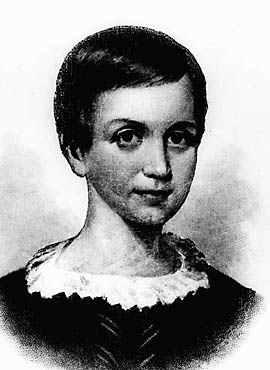| By Sarah Robertson |
When American poet Emily Dickinson died in relative obscurity on May 15, 1886, her groundbreaking body of work stood unpublished and unrecognized. Today, Dickinson is regarded as a pivotal figure in American poetry, and her works are celebrated for their departure from literary conventions and their challenge of societal norms. As we celebrate National Poetry Month and the anniversary of Dickinson’s death, her pioneering contributions to poetry deserve recognition.
Though Dickinson was outwardly private, her interior world was rich with creativity, which she channeled into nearly 1,800 poems during her lifetime. Her innovative poems broke the rules of the time, with notable features including slant rhyme, short lines, the absence of titles, and unconventional capitalization and punctuation. She was an instinctive experimenter who transformed poetic forms by disregarding traditional rhyme and meter and abandoning standard poetic conventions and stylistic devices. Dickinson used her pen and her strong first-person perspective to meditate on themes of spirituality, nature, death, gender, social conventions, salvation, the soul, and immortality. Through poetry, she grappled with the trappings of society while also longing to transcend them.
Dickinson’s poems represent a principled stand against social expectations. By refusing to conform to standards ranging from gender to religion to marriage, she used her poems as an act of rebellion. Her voice is timeless, encapsulating the power of resistance and the ability of poetry to convey it. Through poetry, she found the ultimate freedom.
Dickinson’s first collection of poetry wasn’t published until four years after her death, in 1890. Her work only surfaced after her sister, Lavinia, found her poems tucked away in hand-sewn books that embodied her life’s work. Obscure in life, Dickinson gained widespread recognition in death.
Several of Dickinson’s poems are covered in Gale’s Poetry for Students series, including “Because I could not stop for Death” (vol. 2 and 61), “I felt a Funeral, in my Brain” (vol. 13), “This Is My Letter to the World” (vol. 4), “I like to see it lap the Miles” (vol. 53), and “Tell all the Truth but tell it slant” (vol. 42). We invite you to celebrate National Poetry Month and reflect on the legacy of Emily Dickinson!
Poetry for Students is available in print and eBook format on Gale eBooks. Learn more >>
Meet the Author
Sarah Robertson is a writer, editor, and longtime contributor to For Students.


